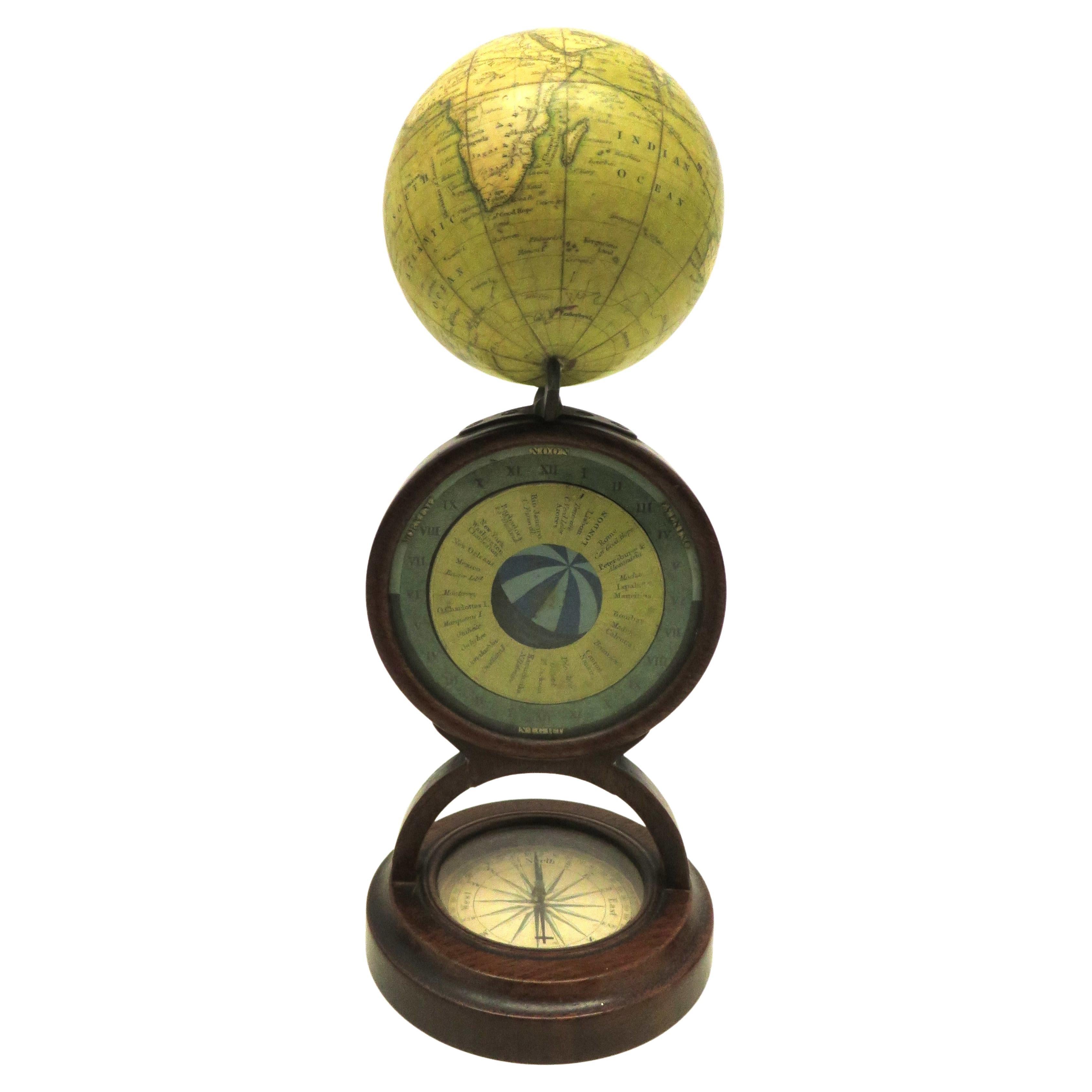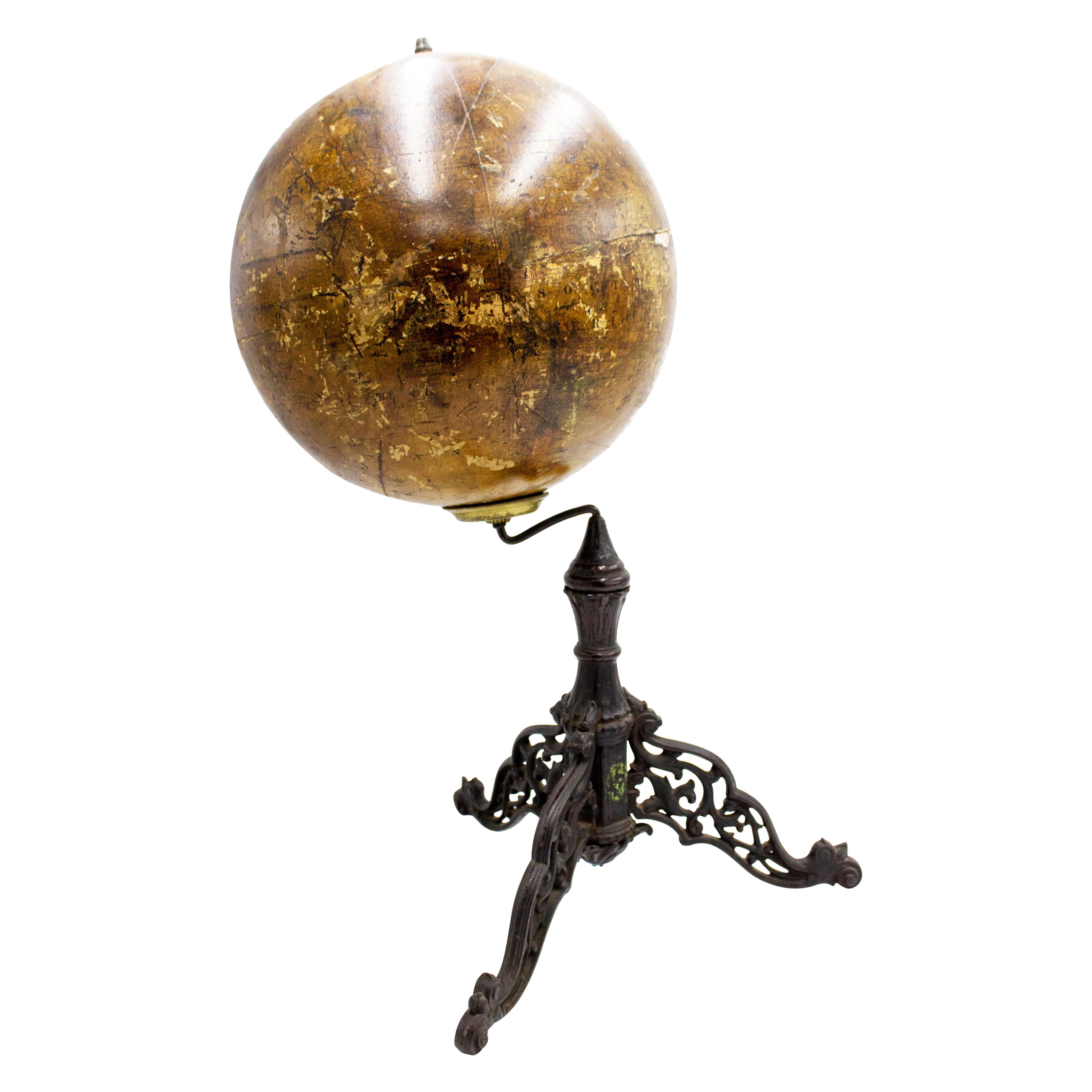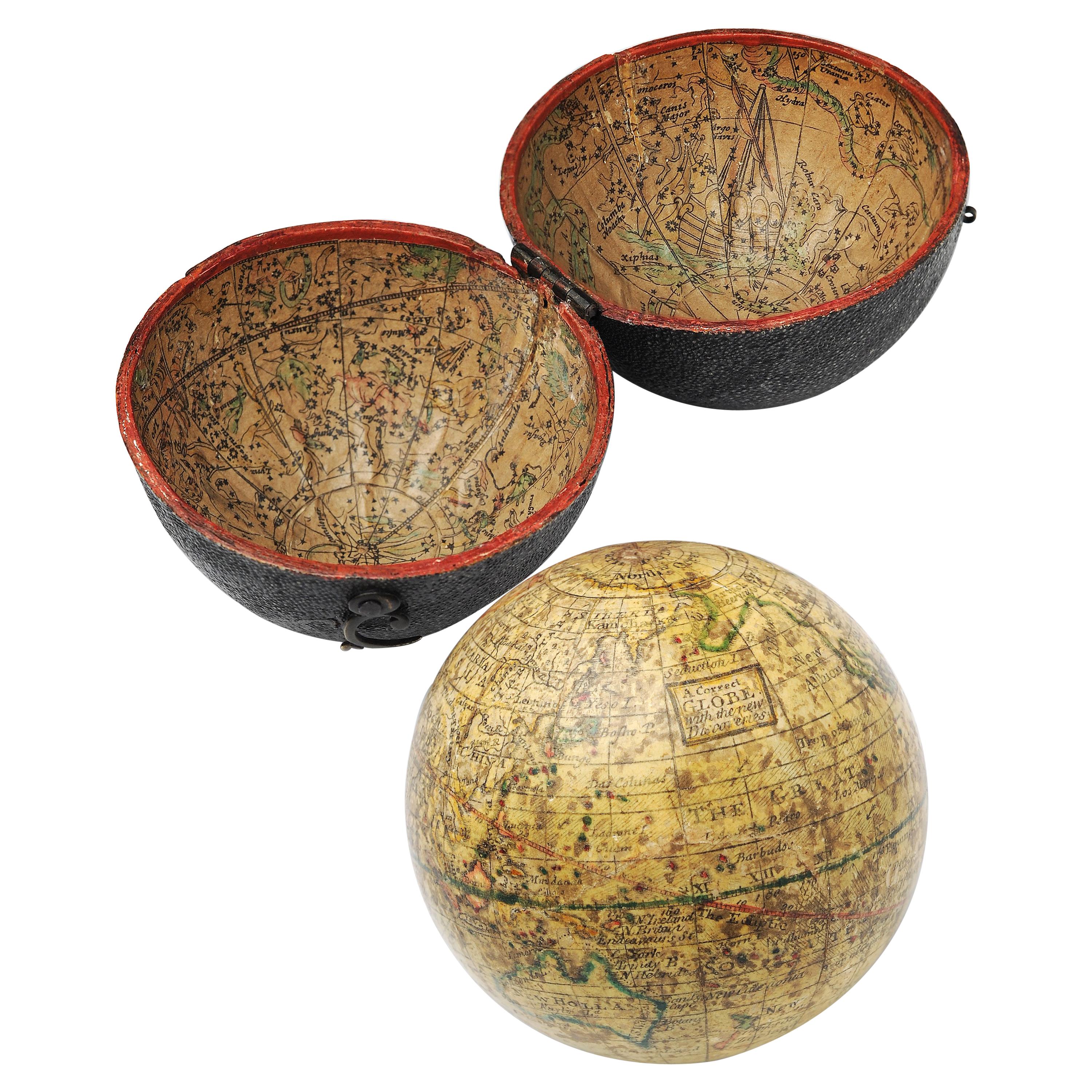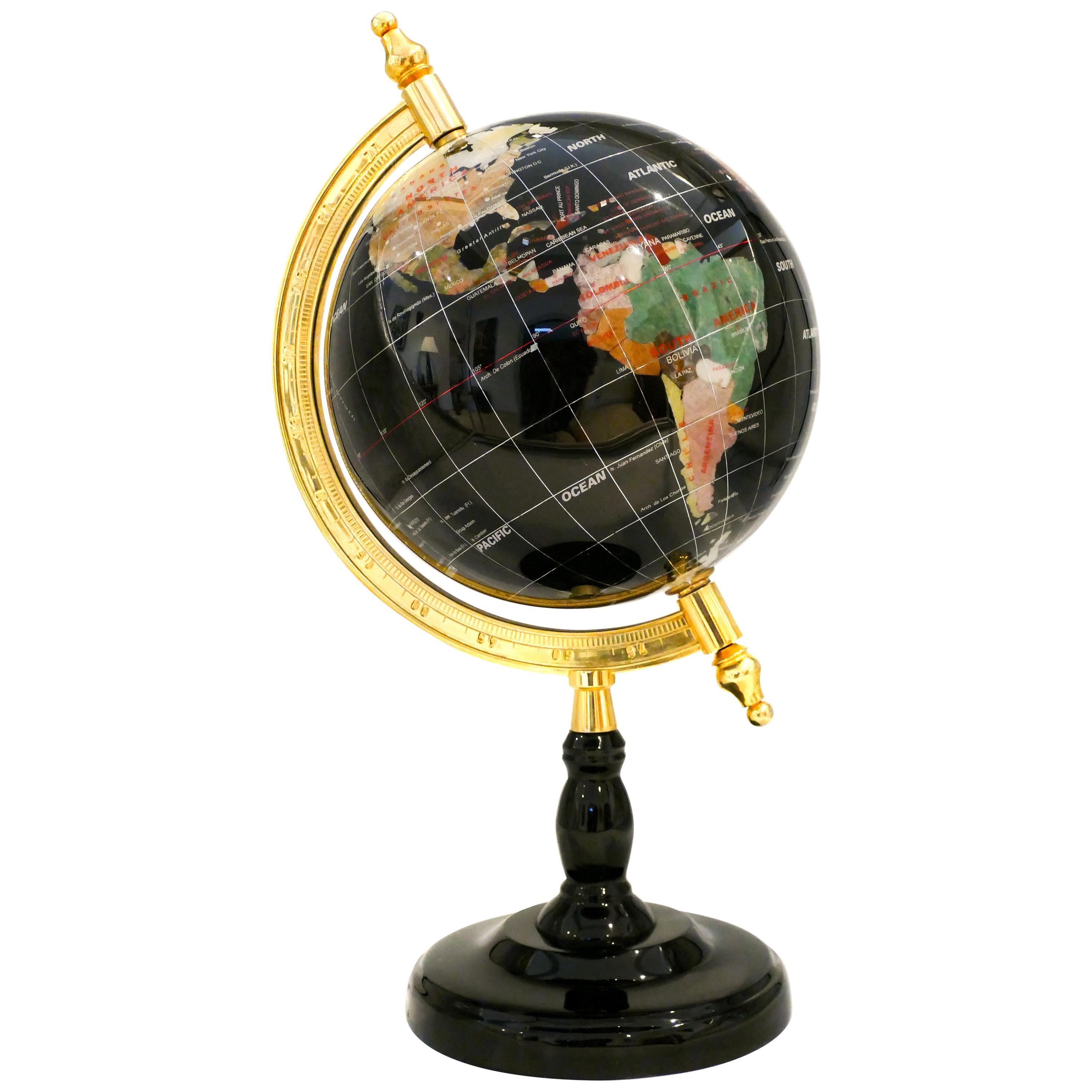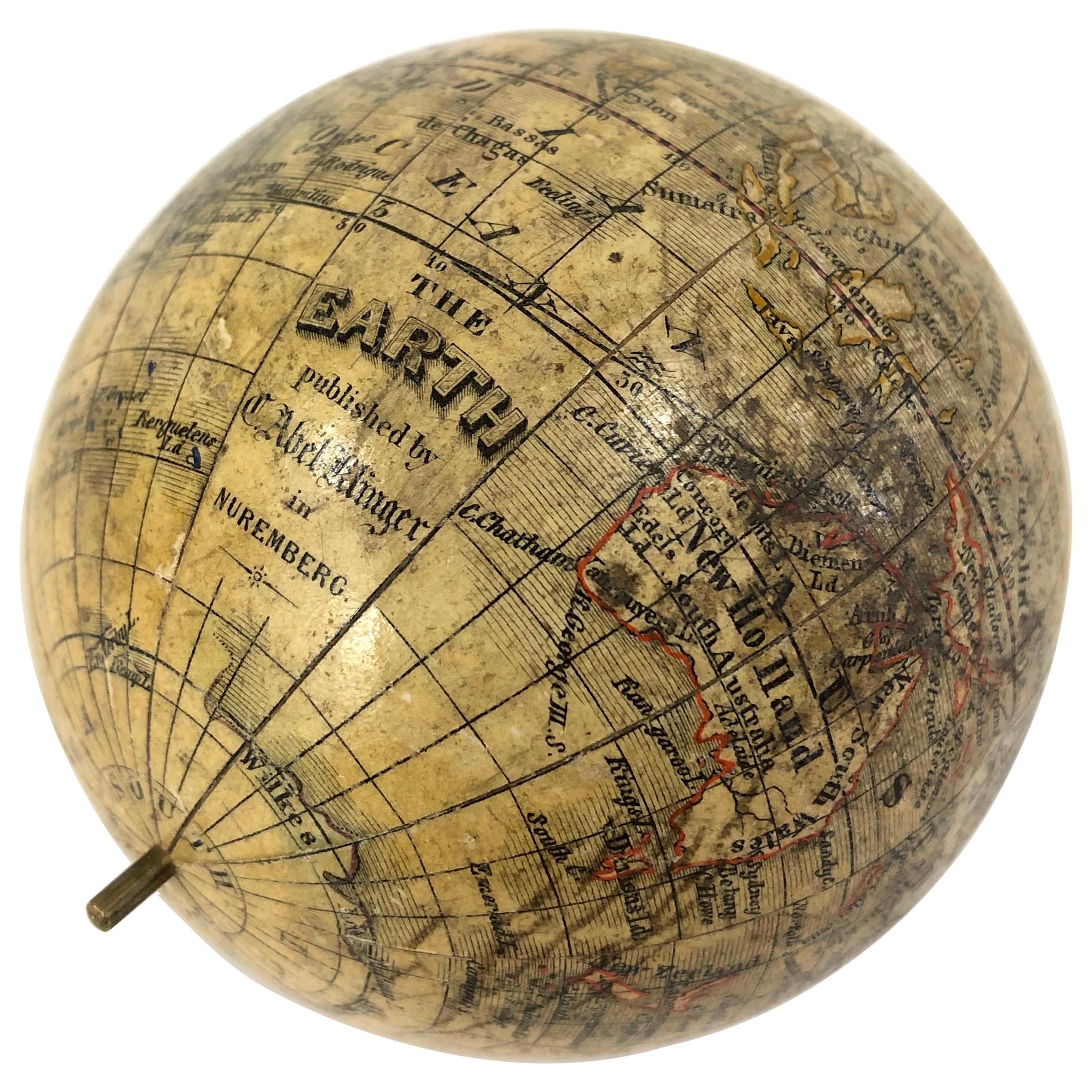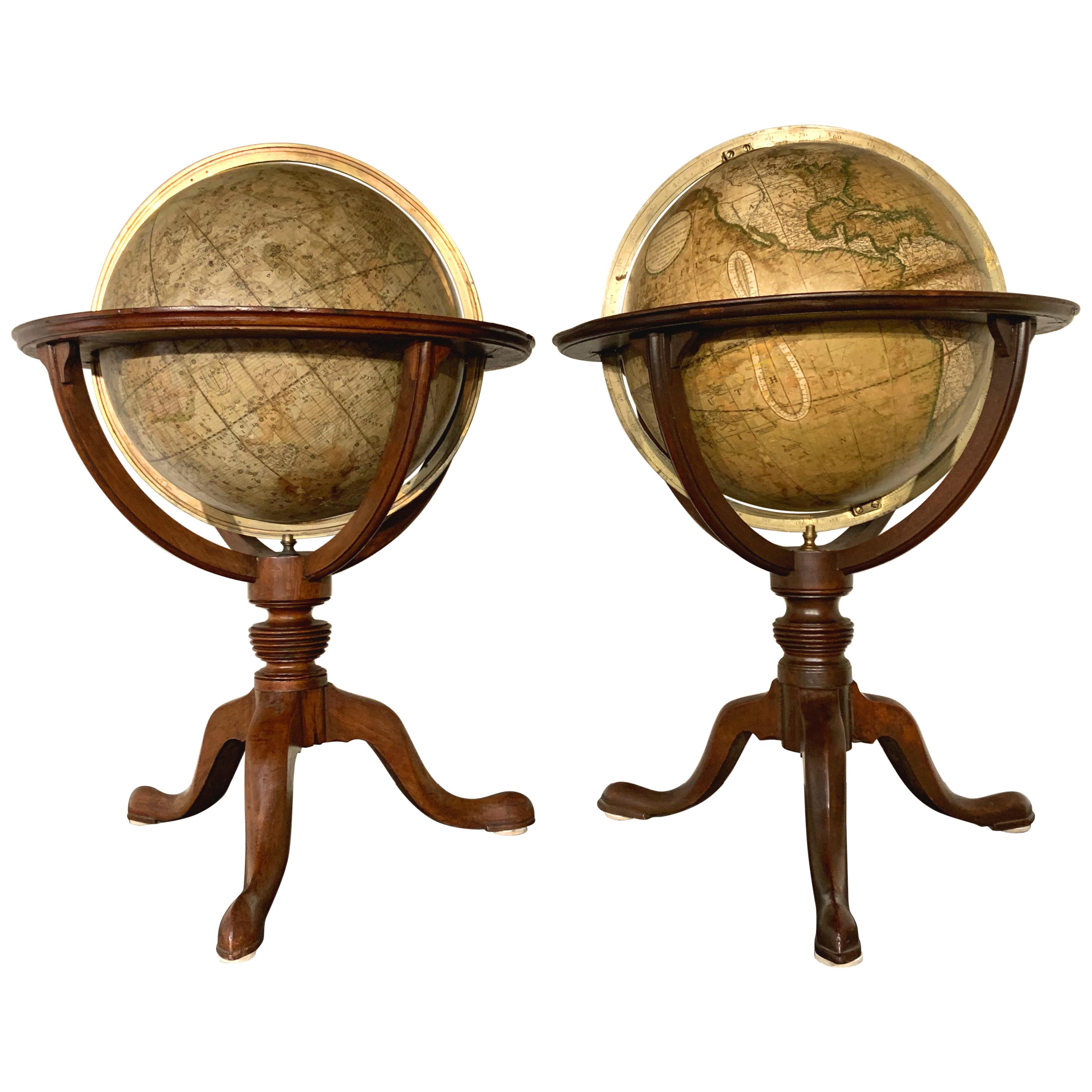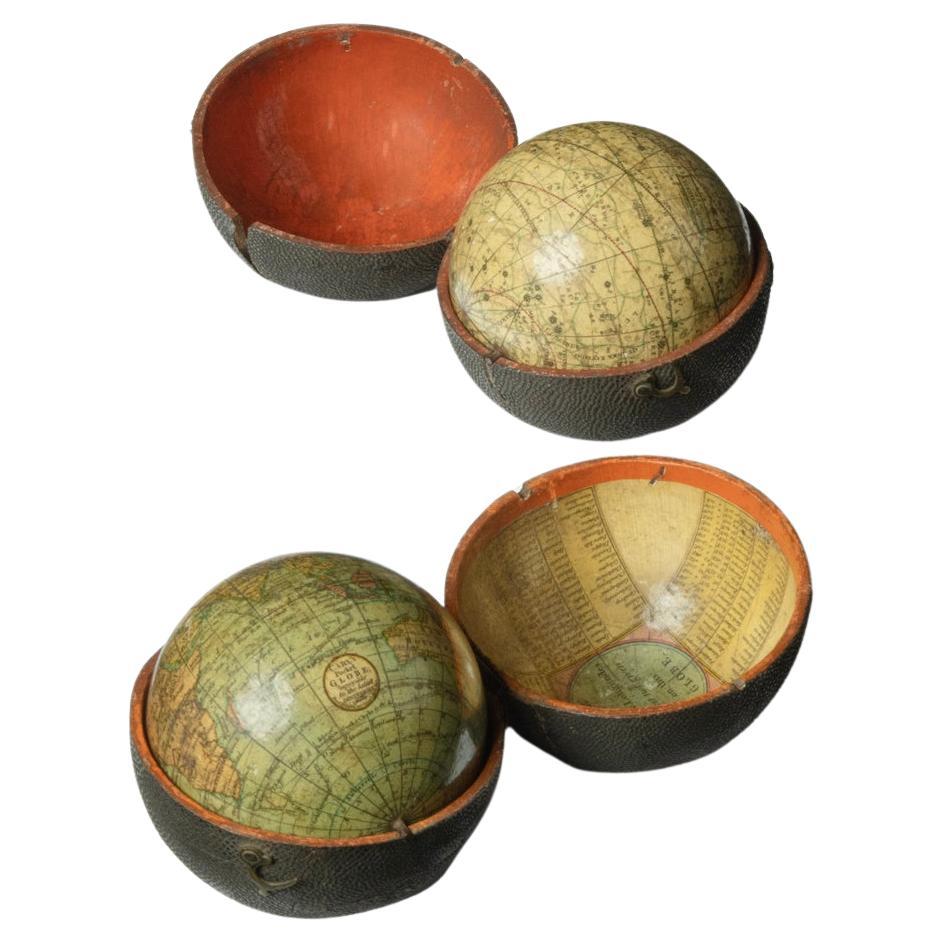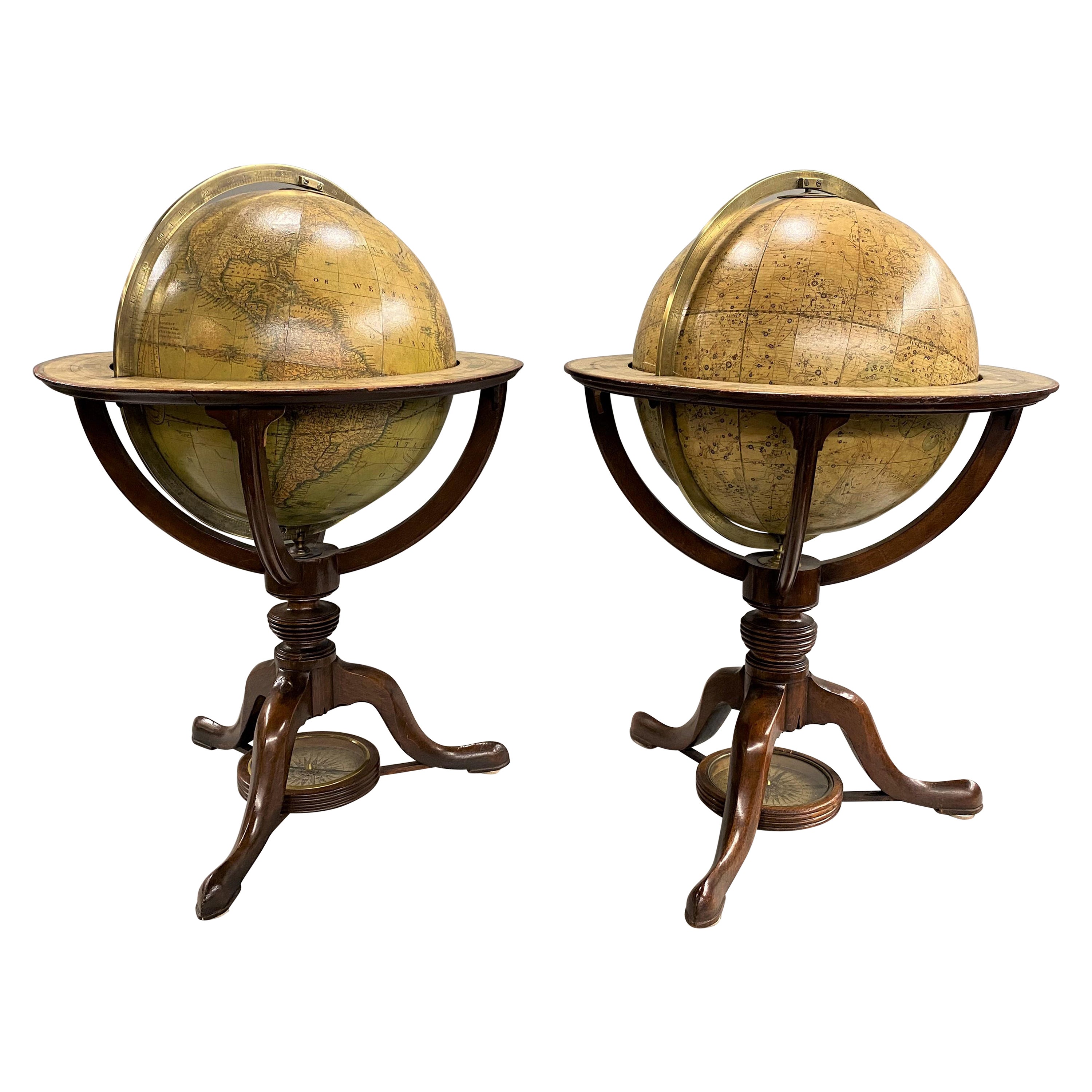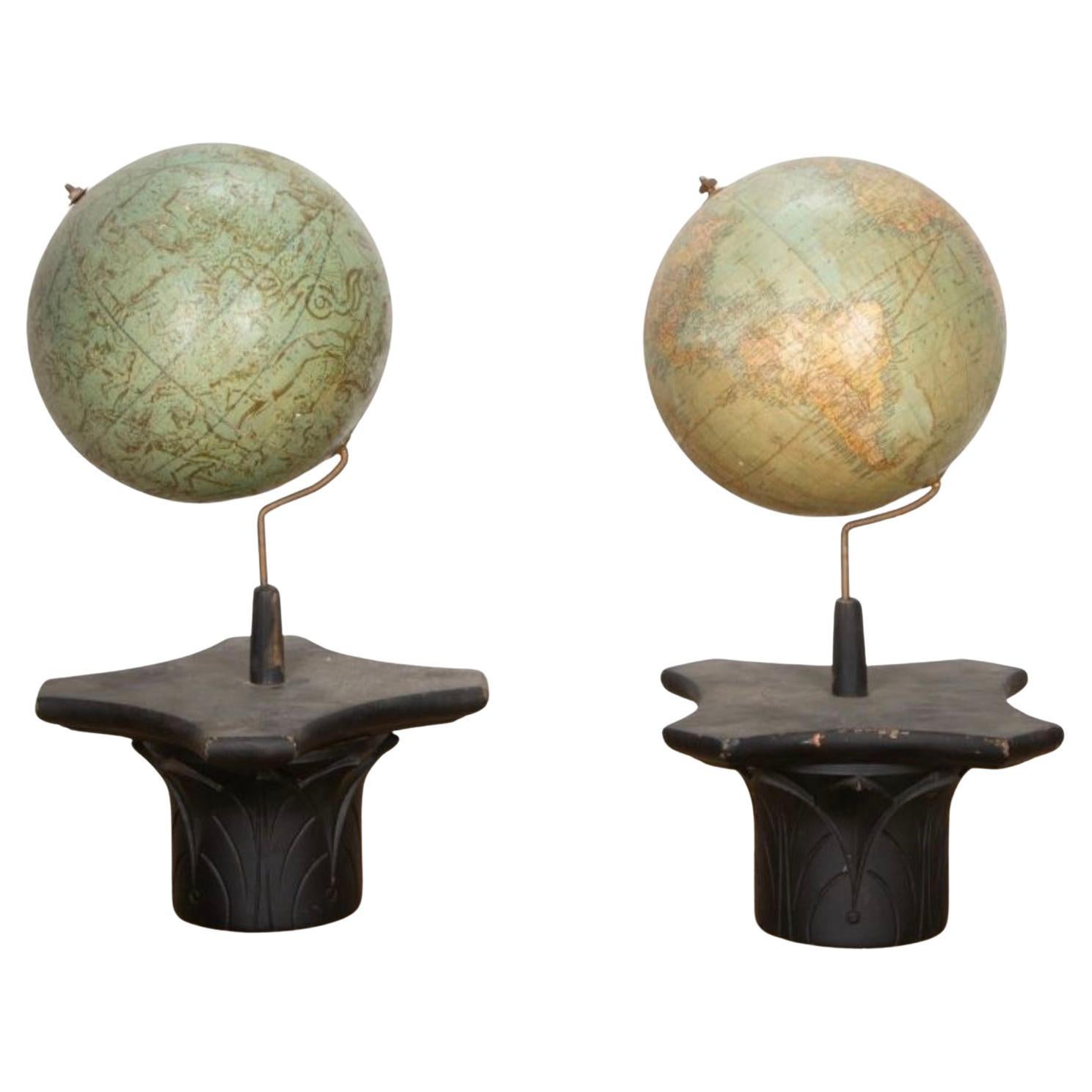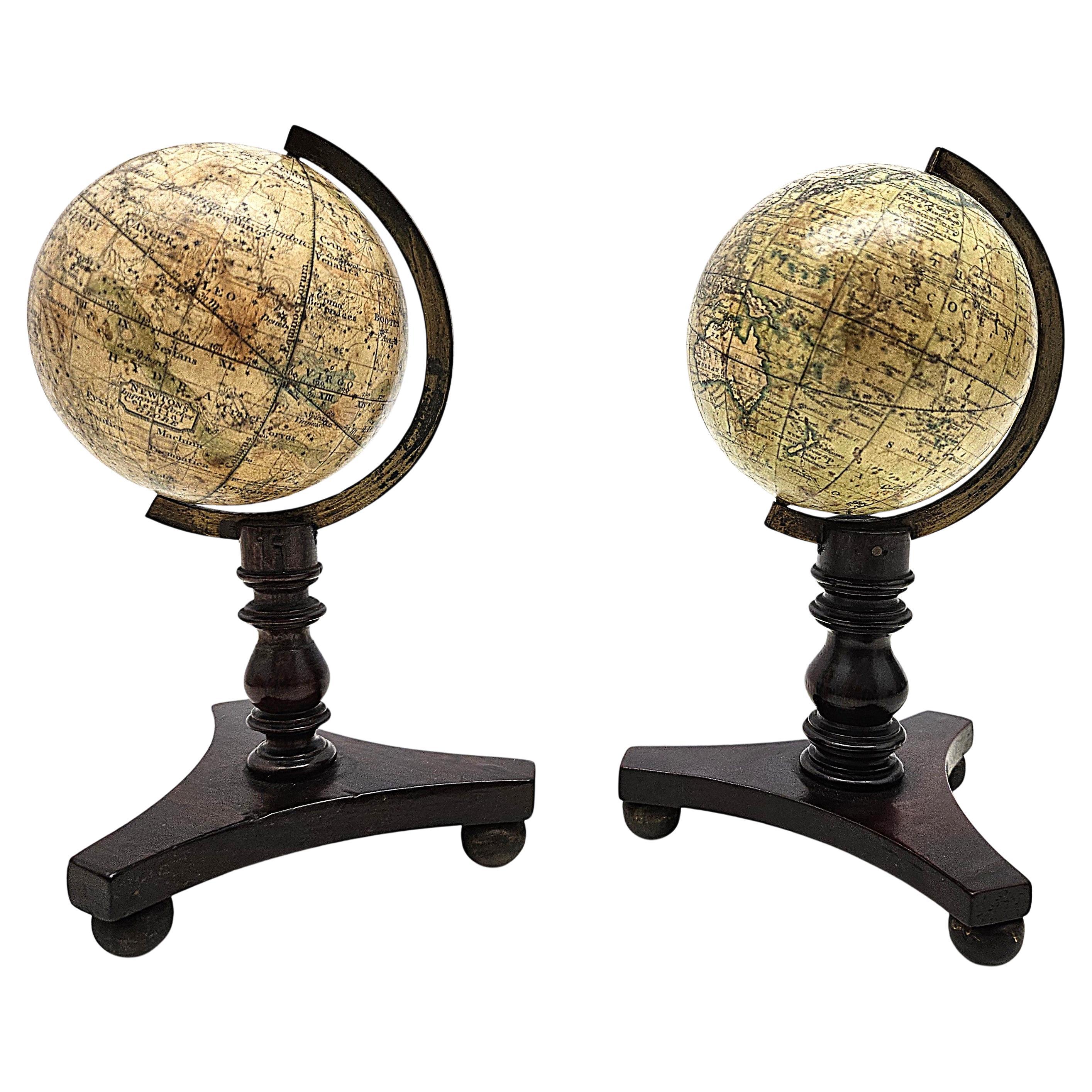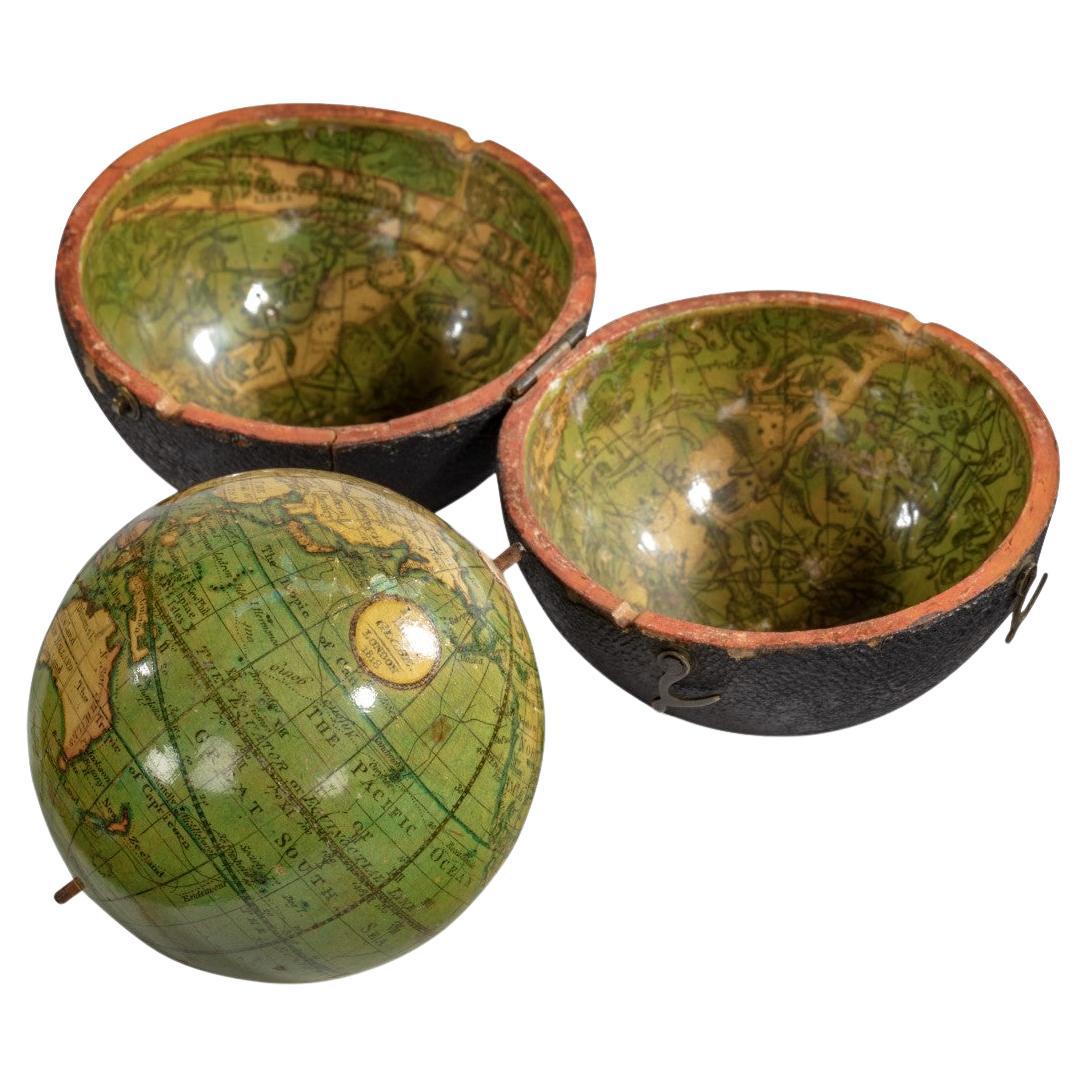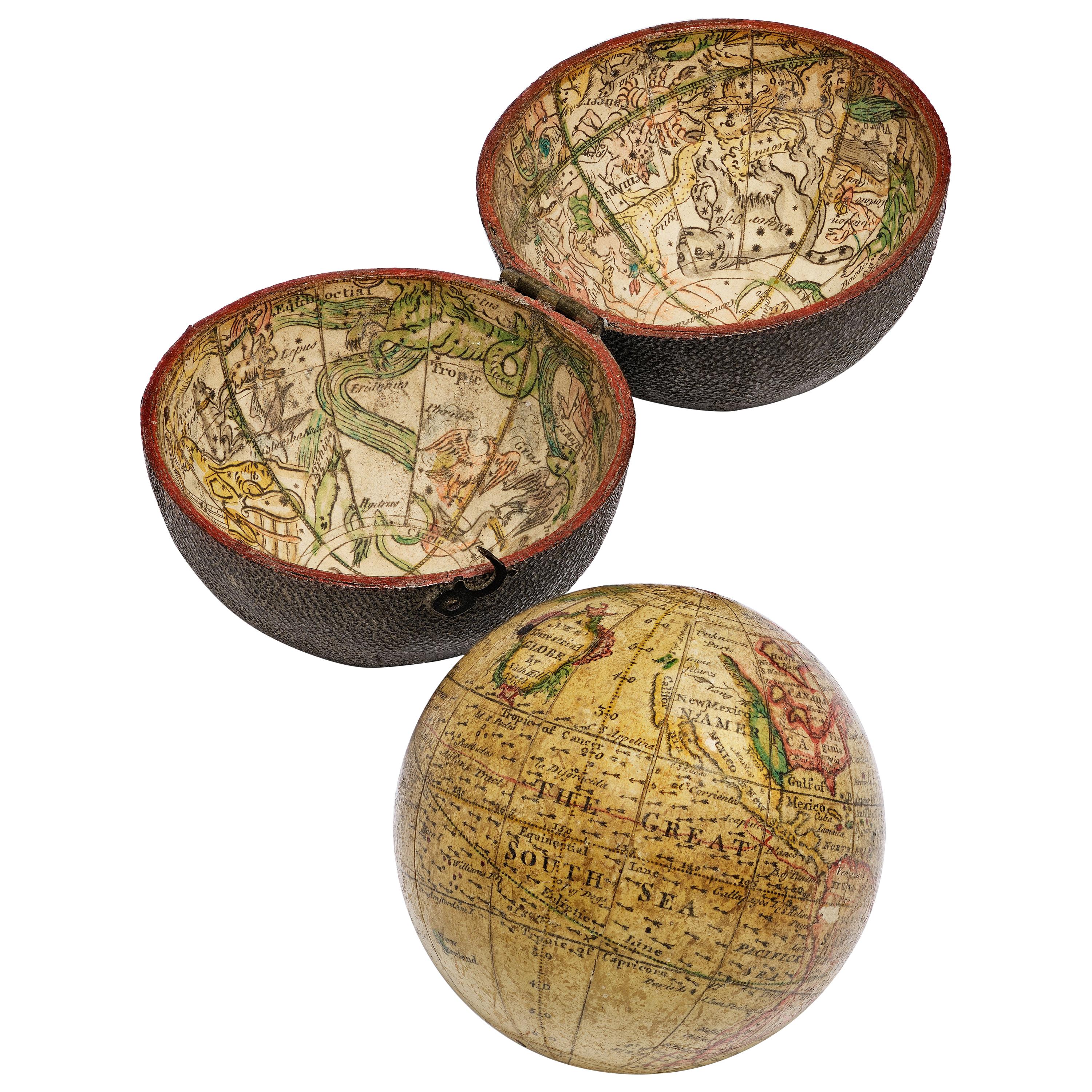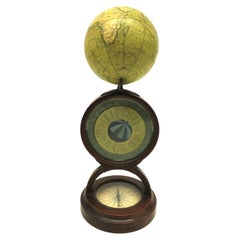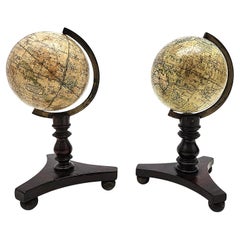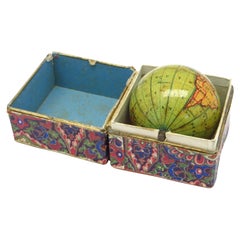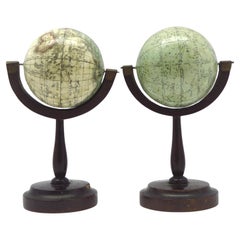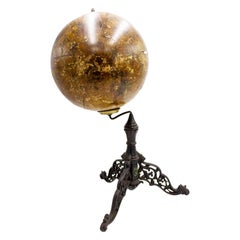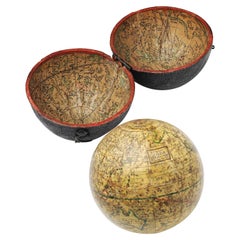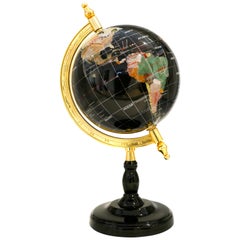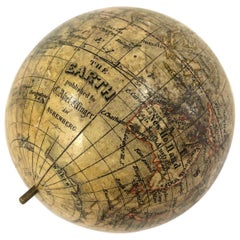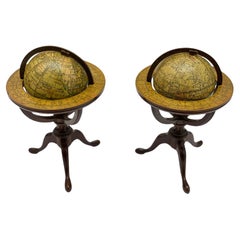
An attractive pair of late-eighteenth century English pocket globes
View Similar Items
Want more images or videos?
Request additional images or videos from the seller
1 of 6
An attractive pair of late-eighteenth century English pocket globes
Price:$17,863
$22,757.06List Price
About the Item
- Creator:Nicholas Lane (Maker)
- Dimensions:Height: 6.75 in (17.15 cm)Diameter: 2.75 in (6.99 cm)
- Sold As:Set of 2
- Materials and Techniques:
- Place of Origin:
- Period:1770-1779
- Date of Manufacture:1779
- Condition:An attractive pair of late-eighteenth century English pocket globes wonderfully modified into matching carved mahogany desk stands in the last quarter of the nineteenth century.
- Seller Location:ZWIJNDRECHT, NL
- Reference Number:1stDibs: LU9419237074222
About the Seller
No Reviews Yet
Vetted Professional Seller
Every seller passes strict standards for authenticity and reliability
Established in 2004
1stDibs seller since 2023
Authenticity Guarantee
In the unlikely event there’s an issue with an item’s authenticity, contact us within 1 year for a full refund. DetailsMoney-Back Guarantee
If your item is not as described, is damaged in transit, or does not arrive, contact us within 7 days for a full refund. Details24-Hour Cancellation
You have a 24-hour grace period in which to reconsider your purchase, with no questions asked.Vetted Professional Sellers
Our world-class sellers must adhere to strict standards for service and quality, maintaining the integrity of our listings.Price-Match Guarantee
If you find that a seller listed the same item for a lower price elsewhere, we’ll match it.Trusted Global Delivery
Our best-in-class carrier network provides specialized shipping options worldwide, including custom delivery.More From This Seller
View AllAn English POCKET GLOBE with dial for time zones
By Newton and Son
Located in ZWIJNDRECHT, NL
NEWTON & SON (fl.1840-61)
AN ENGLISH POCKET GLOBE WITH A DIAL FOR TIME ZONES, CIRCA 1835
A previously unrecorded stand for an early-19th-century English globe.
A 3-inch (7.6cm.) di...
Category
Antique 1830s British Other Globes
Materials
Mahogany
Lovely pair of English miniature globes on carved wooden stands
By Newton and Son
Located in ZWIJNDRECHT, NL
“NEWTON’S NEW & IMPROVED TERRESTRIAL and CELESTIAL GLOBES".
PUBLISHED BY NEWTON & SON,
66 CHANCERY LANE, LONDON.”
No date but ca. 1820-1830.
Diameter globes 2.75 inches / Total heig...
Category
Antique 1820s British Victorian Globes
Materials
Wood
Miniature pocket globe in colourful card box
By Michael Manning
Located in ZWIJNDRECHT, NL
Miniature terrestrial pocket globe. Model of the earth.
London, 1857 by J. Manning
diameter of 1,75 inches / 4,5 cm.
This lovely miniature terrestrial globe consists of twelve copper engraved, hand coloured gores over a wooden base. The gores are varnished. The colouring is both subtle and original. With a central pin contained in a colourful card box.
A little about miniature globes: The miniature or pocket globe was a British invention, introduced to the world by Joseph Moxon in 1673 when he produced a 3-inch globe. To own a pocket globe is to have the whole world in miniature. Pocket globes were never to be taken very seriously – they never served any practical purpose; their size makes accurate calculations impossible, and they tend to lack the rings and dials for most common manipulations. No, they were seen more as a status symbol, or a lovely decorative artistic artefact to reside on a gentleman’s desk or small table. There is a school of thought that some of the cheaper pocket globes may have aided children’s education. Today, they reflect a lost and never-to-be-forgotten age of exploration...
Category
Antique 19th Century British Early Victorian Globes
Materials
Hardwood, Paper
A fine pair of miniature globes on stands
By Karl Muller
Located in ZWIJNDRECHT, NL
A rare pair of miniature terrestrial and celestial globes.
by K. Müller, 1822
Karlsruhe, Germany
Diameter globes: 7 cm. Total high: 14,5 cm.
Each with 12 hand-coloured engraved p...
Category
Antique Early 19th Century German International Style Globes
Materials
Hardwood, Paper
A pair of extremely rare Valk table globes
By Gerard and Leonard Valk
Located in ZWIJNDRECHT, NL
Title on the globes:
VALK, Gerard and Leonard. [Terrestrial globe:] Cosmotheore, caelesti nostro globo, par, et plane novus, hic terrestris ut existeret, certo scias, errore veterum ...
Category
Antique 18th Century Dutch Dutch Colonial Globes
Materials
Other
A huge pair of 21 inches Cruchley Library Globes
By G.F. Cruchley
Located in ZWIJNDRECHT, NL
G.F. Cruchley (UK, 1796-1880)
London ca 1850
A magnificent pair of terrestrial and celestial globes. Equatorial table engraved with the signs of the zodiac and resting on 3 mahogany molded feet held by a compass at the spacer. With graduated brass meridian circles and time clocks. The terrestrial globe is inscribed in a cartouche: Cruchley's new terrestrial globe from the most recent and best authorities. Exhibiting the discoveries in equatorial Africa, north pole. And the new settlements and divisions in Australia, New Zealand, Californa, Texas, &c. London. Sold by Gould and Porter opticians 181 strand WC. The celestial globe is inscribed in a cartouche: Cruchleys new celestial globe on which is accurately laid down the whole of the stars and nebule contained in the astronomical catalogue of the Reverend Mr. Wollaston F.R.S. Also from the authorities Flamstead, De La Caille, Hevellus, Bradley, Herschel, Maskelyne, &c. Ands the limits of each constellation determined by a boundary line. London, published by G.F. Cruchley, map-seller & globe maker, 81 Fleet street.
Signed: CRUCHLEY in London England, circa 1850 H. 125 cm Diam. 53 cm (21 inches) Diam. 25 cm compasses The two spheres are in a perfect state of freshness and are perfectly legible.
The condition of both the globes is very good. There have been some professional repairs to some damaged gores. The Terrestrial globe in good conserved and legible condition, it has areas of rubbing, retouching, and slight discoloration. The Celestial globe is also in good conserved and legible condition with areas of rubbing, retouching and slight discoloration. The gores themselves have been cleaned and revarnished. The splendid mahogany legs and moulded feet are in first class condition. Each globe consists of 12 hand coloured copper engraved gores over a paper-maché hollow core, made up of two hemispheres joined at the equator and covered with a layer of plaster. There are paper horizon rings, made up of a series of concentric circles, displaying the months of the year, the signs of the zodiac and wind directions.
THE TERRESTRIAL GLOBE.
The globe provides much detailed information, and was accurate up to the date of production, which in this case is the mid-19th century. It shows the latest discoveries and developments that had taken place. It displays names and territories that were once familiar to the people of the age, 150 years into the future! In Asia for example, there are places like ‘Little Bucharia’, ‘Little and Greater Tartary’, ‘Russia in Asia.’ Undoubtedly, the continent that has changed more than any other is Africa. So many African countries that we know and recognise now, had different, perhaps more ‘Colonial’ names more than a century and a half ago. There was ‘Nubia’ (Sudan/Egypt), ‘Abbyssinia’ (Ethiopia), ‘Cape Colony’ (South Africa), ‘Dahomey’ (Benin) but to name a few. Australia was a little over 50 years away from its union via ‘Federation’ in 1901. This brought about the Commonwealth of Australia. However, in 1850 they were six separate British selfserving colonies, ruled directly from England.
In North America, both Los Angeles and San Francisco are incorporated as cities into California - as it becomes the 31st U.S. state. Much of mid-western and western USA were known as ‘The Western Territory’ & ‘The Missouri Territory’, Florida was still refered to as ‘East & West Florida’. Canada was split into ‘Canada East’ & ‘Canada West.’ Canada East was primarily (for historical reasons) French-speaking, and Canada West primarily Englishspeaking. Much of Western Canada remained unexplored and undeveloped. In Europe, there was still the ‘Russian Empire’, the ‘Ottoman Empire’, the ‘AustroHungarian Empire’, and the German ‘Prussian Empire.’
THE CELESTIAL GLOBE.
The Celestial Globe displays the stars, the constellations, clusters and nebulae in a beautiful and well thought out manner. Mythical figures and signs of the zodiac are seen. The equinoctial and solistitial colures are graduated in degrees. Although the colour is somewhat muted, it takes nothing away from the overall beauty and the undoubted aesthetic qualities of the globe.
Historically, globes are among the most ancient scientific instruments known to man. They can be dated back over two millennia, and are still manufactured to this day. The earliest tradition of globe making is mainly concerned with celestial globes – man...
Category
Antique 1850s British Victorian Globes
Materials
Other
You May Also Like
Late 19th Century English Victorian World Globe
Located in Queens, NY
English Victorian globe of the world on wrought iron filigree 3 legged base.
Category
Antique Late 19th Century British Victorian Globes
Materials
Iron
English Pocket Globe, London, Circa 1775-1798
By Herman Moll
Located in Milano, IT
Pocket globe
London, between 1775 and 1798
Re-edition of the globe of Hermann Moll (1678-1732) dated 1719
The globe is contained in its original case, which itself is covered in shark skin.
There are slight gaps in the original paint on the sphere. The case no longer closes.
The sphere measures 2.7 in (7 cm) in diameter whereas the case measures 2.9 in (7.4 cm) in diameter.
lb 0.22 (kg 0.1)
The globe is made up of twelve printed paper gores aligned and glued to the sphere.
In the North Pacific Ocean there is a cartouche with the inscription:
A Correct
Globe
with the new
Discoveries.
The celestial globe is depicted on the inside of the box and is divided into two hemispheres with the cartouche:
A correct globe
with ye new cons
relations of Dr.
Halley & c.
It shows the ecliptic divided into the days of the zodiacal calendar and the constellations represented as animals and mythological figures.
On the globe are delineated the equinoctial line, divided by degrees and hours, the ecliptic and the meridian (passing west of Greenwich). The continents are shaded and outlined in pink, green and yellow. It shows: the Cook routes; a wind rose in the Southern Indian Ocean; Antarctica without land; Africa with Negroland (Hermann Moll is considered the first geographer to name the West African region in his 1727 map. (Encyclopaedia Britannica, ed. 1902, under "States of Central Africa"); Tartary in Central Asia; the Mogul kingdom in northern India; in North America only New England, Virginia, Carolina, Florida, Mississippi are identified; California is already a peninsula; the northwest coast of America is "unknown parts" (Alaska is not described and it is only partially delineated, it was to become part of the United States in 1867); Mexico is named "Spain"; Central South America "Amazone America". Australia (which was to be so named after 1829) is called New Holland. The route of Admiral Anson is traced (1740) and the trade winds are indicated by arrows. (See Van der Krogt, P., Old Globes in the Netherlands, Utrecht 1984, p. 146 and Van der Krogt, P. - Dekker, E., Globes from the Western World, London 1993, pp. 115.)
Elly Dekker, comparing Moll’s 1719 globe and his re-edition (of which the one described above is a sample), identifies the differences between them: the two editions are quite similar to each other, but in the "anonymous" globe, compared to the previous globe of 1719, California looks like a proper peninsula - the reports of the Spanish explorers of the region had given rise to uncertainty over whether it was connected to the mainland or not. The geographical nature of California was confirmed after the explorations of Juan Bautista de Anza (1774-1776). The routes of Dampier's journey were partially erased and the route of Captain James Cook's first voyage was superimposed on them, and the geography of Australasia was adapted accordingly, including the denomination of the Cook Strait. See Dekker, Elly, Globes at Greenwich, 1999.
An important ante quem element is represented by Tasmania: it is not separated from Australia by the Bass Strait...
Category
Antique Late 18th Century English George III Globes
Materials
Shagreen, Paper
Globe, Late 20th Century
Located in Roma, IT
Terrestrial globe, realized in the late 20th century in plastic to imitate hard stones, with the golden metal axis and black resin base.
In very goo...
Category
Late 20th Century European Globes
Materials
Metal
19th Century German Miniature Pocket Terrestrial Globe
By C. Abel-Klinger
Located in Essex, MA
A miniature 19th century 3.5 inch diameter pocket terrestrial globe by C. Abel-Klinger, Nuremberg, Germany, in English for the English speaking markets. Signed with cartouche reading...
Category
Antique 1880s German Scientific Instruments
Materials
Brass
$1,230 Sale Price
50% Off
Pair of 19th Century English J & W Cary Celestial/Terrestrial Table Model Globes
By John & William Cary
Located in Milford, NH
A fine assembled pair of 12-inch English table model globes on stands manufactured by J & W. Cary, the left globe with cartouche labeled “The New Celestial Globe, on which are correc...
Category
Antique Early 19th Century English Globes
Materials
Brass
Pair of George III 3 inch pocket globes by J & W Cary, one dated 1791
Located in Lymington, Hampshire
The terrestrial globe is applied with 12 engraved and hand-coloured gores and signed in a circular cartouche ‘Cary’s Pocket Globe, Agreeable to the Latest Discoveries. Pubd. by J. & ...
Category
Antique 1790s English Globes
Materials
Shagreen
